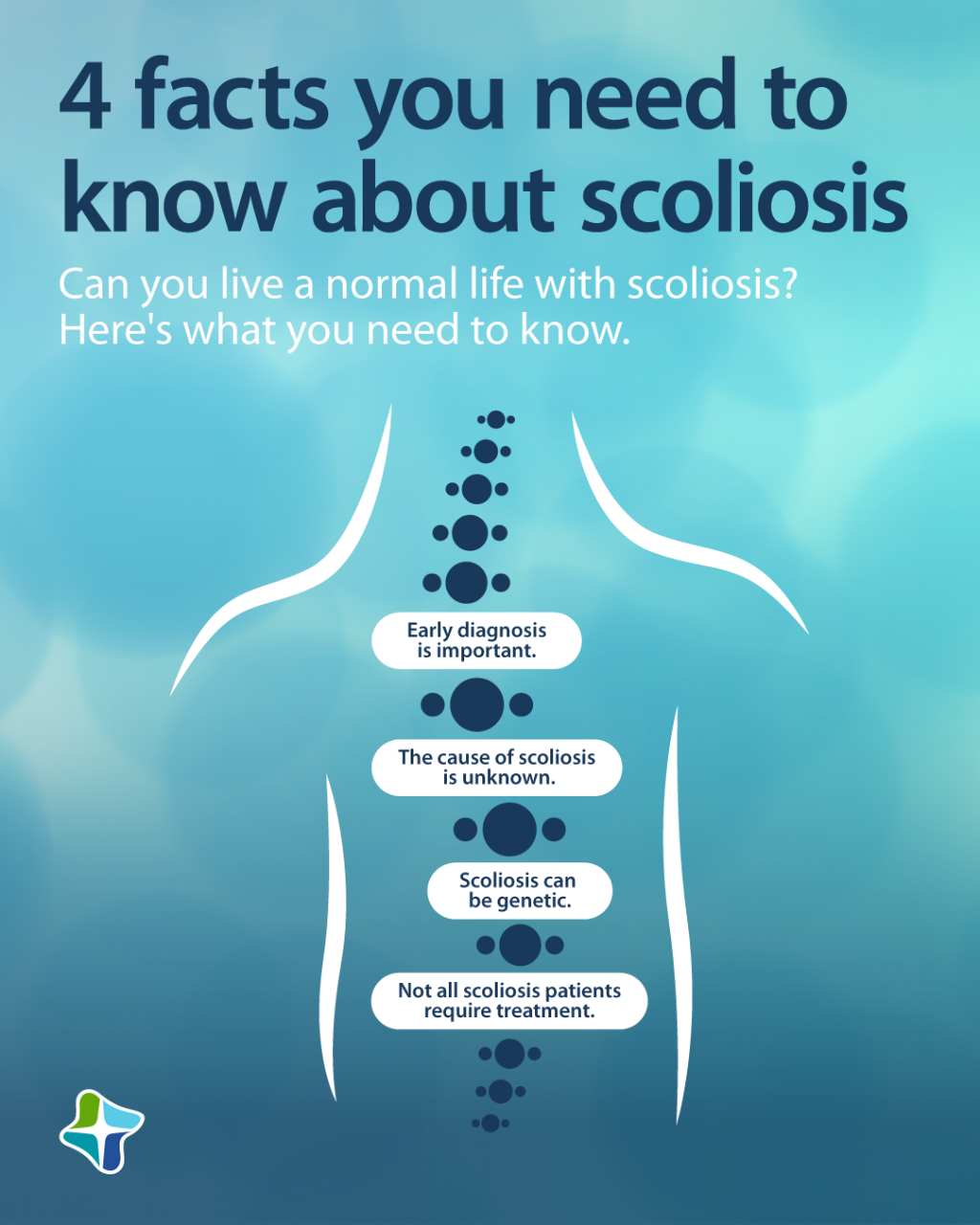If you’ve ever had (or spent time with) kids, you know that there are plenty of things that adolescents can get bent out of shape about. This age comes with many changes as their bodies grow, from formative experiences that shape their personalities and personal values, to the emotional and physical turbulence of puberty. But one change you might not think to look for is about getting literally bent out of shape—the development of scoliosis, a curvature of the spine, during this time before skeletal maturity is reached.
Scoliosis is a common condition of the spine, with a majority of the roughly three million new cases each year being identified in children between 10 to 12 years old. Here are four facts you need to know about scoliosis:
- Early diagnosis is important.
- The cause of scoliosis is unknown.
- Scoliosis can be genetic.
- Not all scoliosis patients require treatment.
What you need to know about scoliosis
Scoliosis can affect people of any age, but it is often more common in children aged 10 to 12, and it is about ten times more common in girls than boys. In addition, girls may be at a higher risk for curve progression as the condition continues through the teenage years.
When checking symptoms of scoliosis, it helps to look for the following:
- Uneven shoulders
- Ribs, hips, or shoulders sticking out on one side
- A visibly curved spine
- Clothes not fitting well
- Back pain
Here are more facts you need to know about scoliosis.
1. Early diagnosis is important.
Because scoliosis is more common in children aged 10 to 12, parents need to ensure their children are getting checkups regularly. This is so a child can be diagnosed as early as possible, and symptoms can immediately be managed and mitigated.
Timing of scoliosis checkups matters, too―try asking your pediatrician to check your child for scoliosis before they have their growth spurt. Treatment and management plans for mild scoliosis in children can help prevent bigger spinal curves from forming.
2. The cause of scoliosis is unknown.
The underlying causes of scoliosis are currently not known. The common misconception is that scoliosis comes from bad posture or heavy backpacks. While these may be associated with other conditions such as back pain, they ultimately do not play a role in causing scoliosis.
Here are the three most common types of scoliosis:
- Idiopathic. The most common type, and its causes are unknown.
- Congenital. A form of scoliosis that results from a spinal defect when a baby is born.
- Neuromuscular. This type of scoliosis develops as a result of another condition like cerebral palsy or muscular dystrophy.
3. Scoliosis may be genetic.
While there is no conclusive proof of a scoliosis gene, studies point to genes that relate to nerve fiber elasticity, tissue structure, joint hypermobility, and bone density. There is also a huge gap between types and severity that develop from one family generation to another. For example, with identical twins, one can develop scoliosis and not the other.
4. Not all scoliosis patients require treatment.
Only 30% of scoliosis patients will require treatments like back braces for scoliosis, and only 10% will undergo surgery. Those who undergo surgery have good outcomes, though, especially when performed early, as procedures tend to be quicker and simpler.
What degree of scoliosis requires surgery?
A visual assessment is necessary for a patient to receive an official diagnosis of scoliosis. Below are the three classifications of scoliosis according to severity:
- Mild: 25 degrees or less.
- Moderate: Between 25 and 45 degrees.
- Severe: 40 degrees and above for children, 50 degrees and above for adults.
Doctors may not always recommend treatment, even when the degree of curvature of scoliosis in a patient is severe. However, surgery will be recommended as a treatment if the patient is experiencing the following symptoms:
- Back or leg pain
- Muscle spasm
- Fatigue
- Trouble breathing or standing
- Weakness or numbness in the legs
- Premature feelings of fullness after a meal





